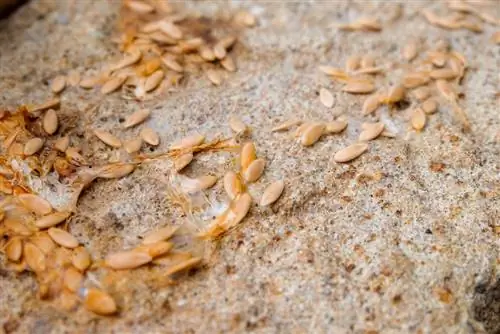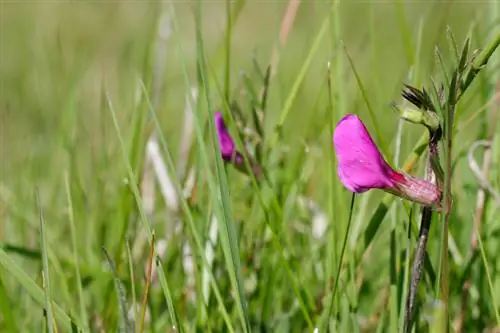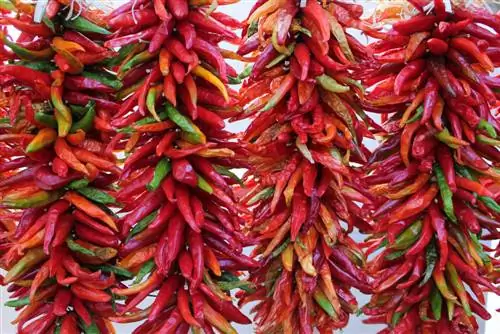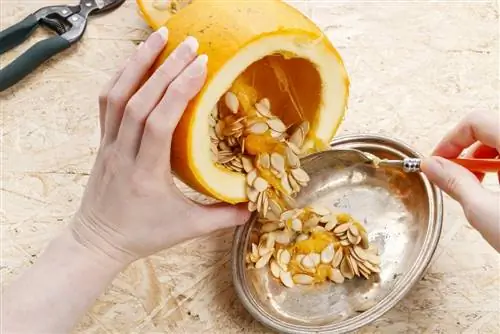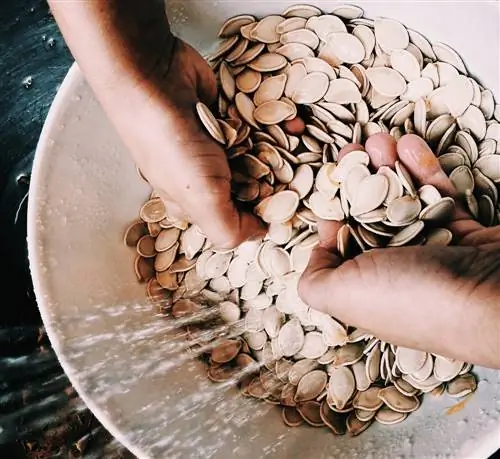- Author admin [email protected].
- Public 2023-12-16 16:46.
- Last modified 2025-01-23 11:22.
If you have missed the harvest time and the vegetables have sprouted or the flowers have set seeds, you don't have to worry. By taking your own seeds you will find sensible use. This is even easier on your wallet and the cycle of home cultivation is closed. However, it is important that you dry the seeds properly so that they survive the winter mold-free and germinate reliably next year.
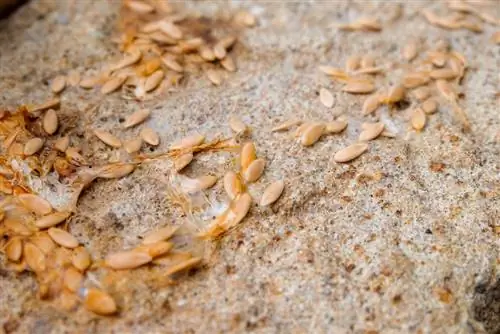
How do you dry seeds correctly?
To dry seeds properly, they should be spread out on kitchen paper, newspaper or cardboard in a dark, cool place and moved regularly. After about a week they will be completely dry and can be stored in labeled envelopes or paper bags in a dry, dark place.
Harvesting seeds
If you plant moist seeds, the risk of them spoiling is relatively high. Therefore, only harvest on dry days.
- Cut off the fully mature seed heads of flowering plants with a sharp knife or secateurs (€14.00 at Amazon). You can recognize these by the dark colored pods. Place them upside down in a glass.
- In vegetable plants, the fruit carries the seeds. Put the pulp in a glass of water for one to two days. As the fermentation process begins, the residues and the germination-inhibiting layer detach from the seeds.
- For vegetables such as chard, rocket or onion, let the plant bloom and then proceed as you would with annual summer flowers.
- For peas or beans, simply put a few pods aside.
Collecting fine flower seeds
You can hit the seed heads of the flowers against the edges of the glass after they have dried. This causes the seeds to come out of the pods. Then put everything in a tea strainer that you hold over a white sheet of paper. The small seeds falling through the fine net are so easy to see.
Drying seeds
To prevent the seeds from becoming moldy, they must dry completely:
- In a dark, not too warm place, spread out kitchen roll, newspaper or cardboard.
- Place the seeds on top.
- Occasionally shift layers so that the seeds dry evenly.
- If you collect a lot of seeds, you should put a label next to each type of seed so that you can distinguish between the grains even after the drying time of about a week.
After drying, pack them in envelopes or small paper bags, label them and store the seeds in a dry, dark place. Under ideal storage conditions, they remain viable for three to five years.
Tip
Only seeds from seed-resistant plants pass on the characteristics corresponding to those of the previous year. Although F1 hybrids also produce seeds, these are not seed-proof. It can happen to you that, for example, pumpkins no longer all have the same color or shape and even differ in taste.

